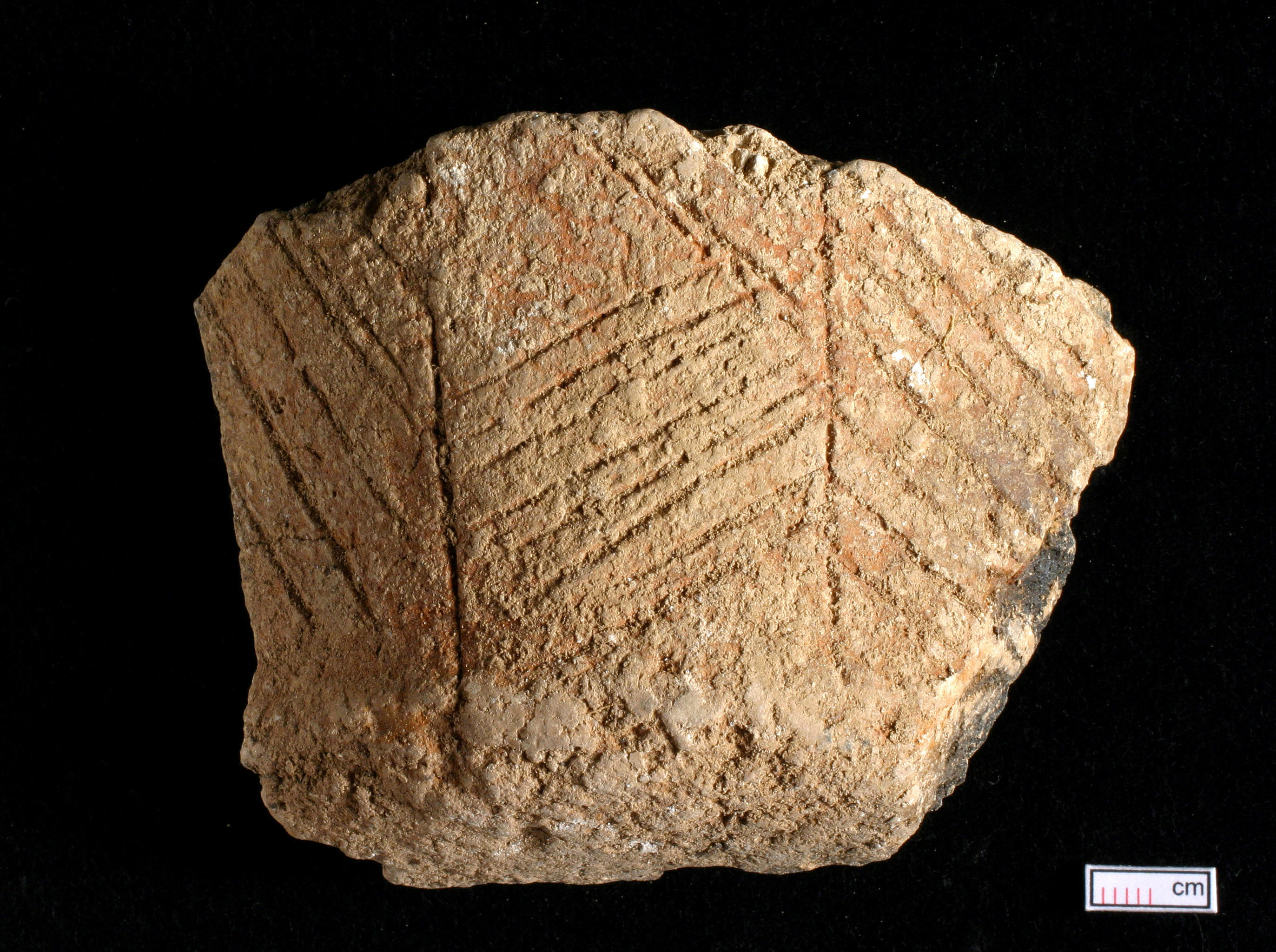During the Neolithic era, people began making pottery for the first time, mainly pots for storing and cooking food. All prehistoric pottery was made entirely by hand, as the potter’s wheel would not be invented and brought to Britain for millennia. The process for making Neolithic pottery was long and intricate, and once a piece was complete, they were often fragile. At this point in history, the process for purifying clay had not been invented, and so other natural substances, such as quartz, were added to the clay mix. Our prehistoric ancestors would take bone tools, such as antler, to carve decorative grooves into the pot before it dried. This process could take many hours, suggesting that this was a highly important part of the pottery-making process to prehistoric people.
<div class="sketchfab-embed-wrapper"> <iframe title="Late Neolithic 'Woodlands' Pottery" frameborder="0" allowfullscreen mozallowfullscreen="true" webkitallowfullscreen="true" allow="autoplay; fullscreen; xr-spatial-tracking" xr-spatial-tracking execution-while-out-of-viewport execution-while-not-rendered web-share src="https://sketchfab.com/models/d0e7e0ca0d6c459dbf5730938daeba63/embed"> </iframe> <p style="font-size: 13px; font-weight: normal; margin: 5px; color: #4A4A4A;"> <a href="https://sketchfab.com/3d-models/late-neolithic-woodlands-pottery-d0e7e0ca0d6c459dbf5730938daeba63?utm_medium=embed&utm_campaign=share-popup&utm_content=d0e7e0ca0d6c459dbf5730938daeba63" target="_blank" rel="nofollow" style="font-weight: bold; color: #1CAAD9;"> Late Neolithic 'Woodlands' Pottery </a> by <a href="https://sketchfab.com/wessexarchaeology?utm_medium=embed&utm_campaign=share-popup&utm_content=d0e7e0ca0d6c459dbf5730938daeba63" target="_blank" rel="nofollow" style="font-weight: bold; color: #1CAAD9;"> Wessex Archaeology </a> on <a href="https://sketchfab.com?utm_medium=embed&utm_campaign=share-popup&utm_content=d0e7e0ca0d6c459dbf5730938daeba63" target="_blank" rel="nofollow" style="font-weight: bold; color: #1CAAD9;">Sketchfab</a></p></div>
The invention of the kiln would be brought to Britain much later by the Romans, and so prehistoric pottery was open-fired, meaning that it was placed in the centre of a burning fire until the clay hardened to ceramic.
